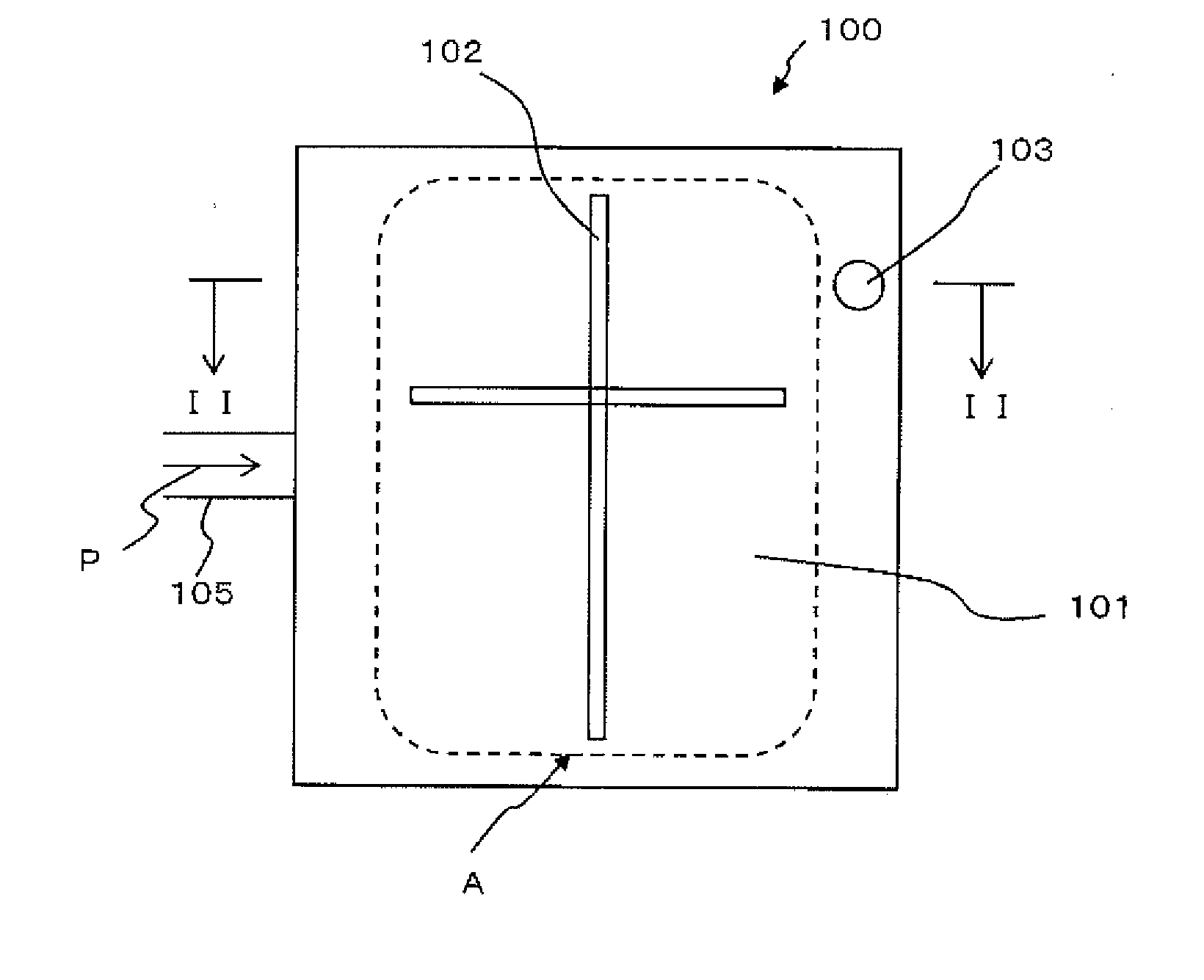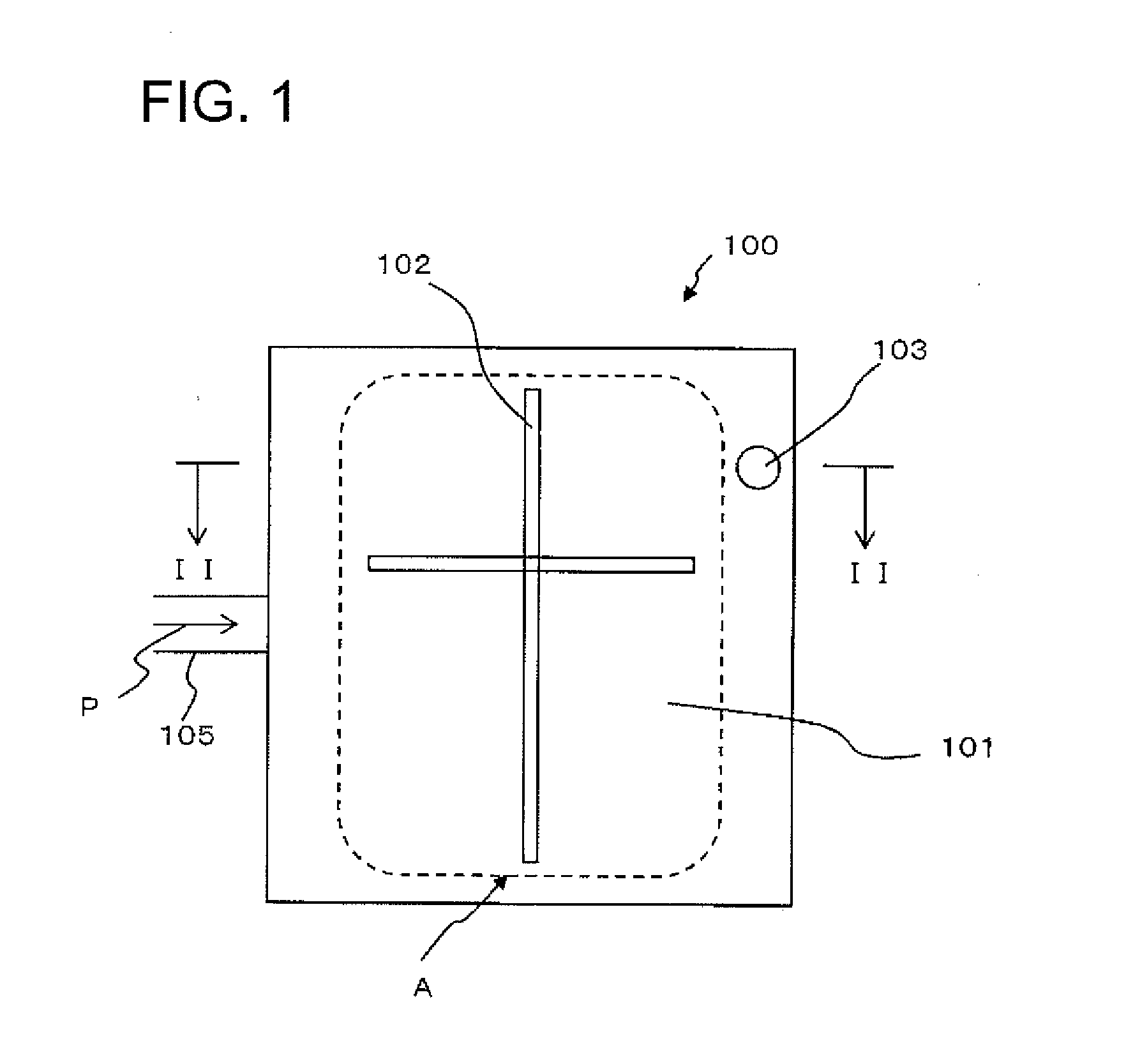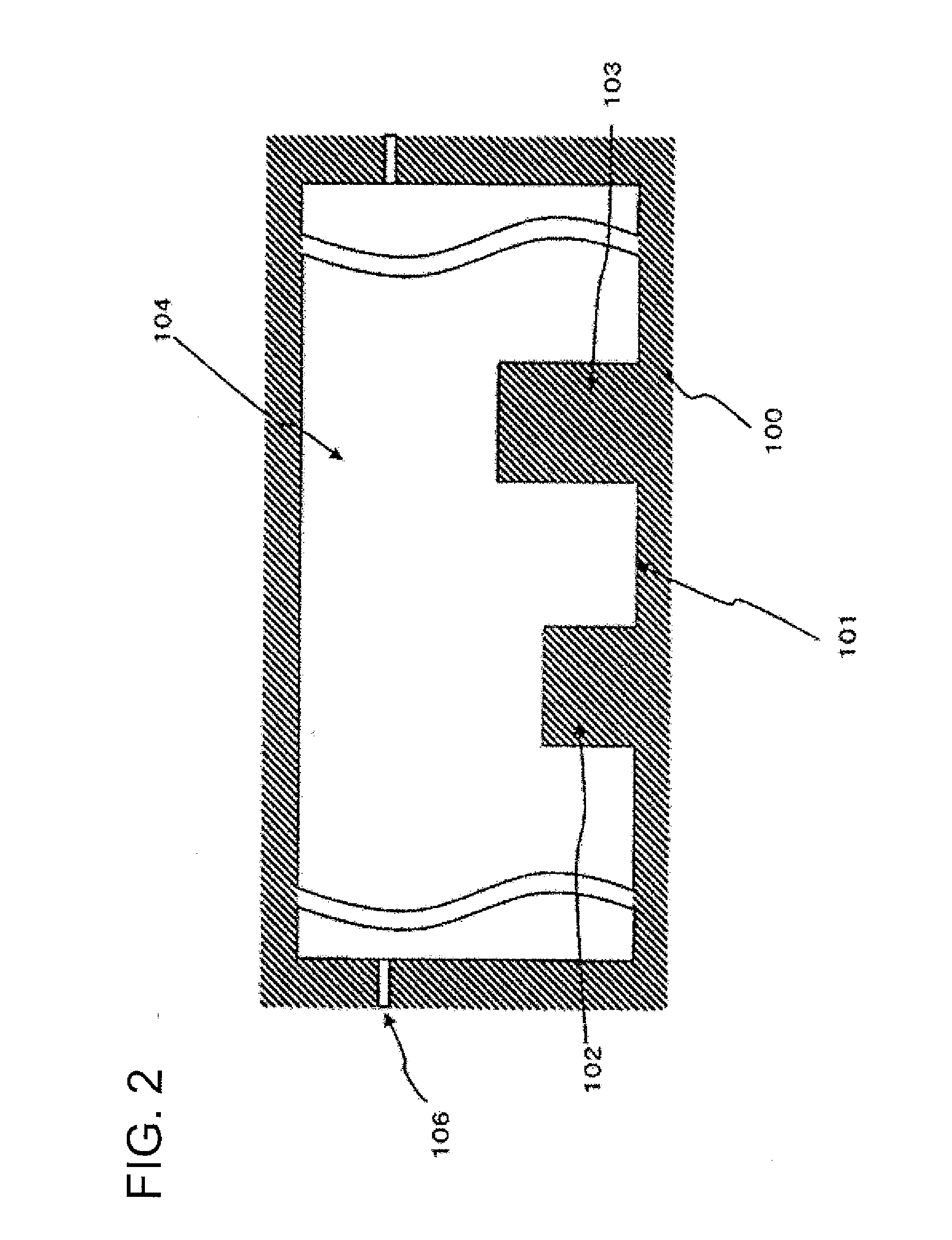Method for Manufacturing Micro-Channel, Die for Molding Micro-Channel Chip, and Micro-Channel Chip
- Summary
- Abstract
- Description
- Claims
- Application Information
AI Technical Summary
Benefits of technology
Problems solved by technology
Method used
Image
Examples
modified example 1
[0057]Next, Modified Example 1 of the above micro-channel chip manufacturing method and the micro-channel chip molding die used therefor will now be described with reference to FIG. 6 and FIG. 7. FIG. 6 is a schematic cross-sectional view in which a resin has been injected into a micro-channel chip molding die according to Modified Example 1. And, FIG. 7 is a schematic cross-sectional view of the moment when the micro-channel chip molding die according to Modified Example 1 is released from a molded resin substrate. In this modified example, as a structure to reduce releasing deformation of a micro-channel 002, a micro-channel chip molding die provided with a anti-shrinkage concave section will be described.
[0058]As shown in FIG. 6, a micro-channel chip molding die 100 according to Modified Example 1 has a anti-shrinkage concave section 200 toward the direction opposed to the cavity. The length (depth) of this anti-shrinkage concave section 200 in the direction opposed to the cavity...
modified example 2
[0064]Further, Modified Example 2 of the above micro-channel chip manufacturing method and the micro-channel chip molding die used therefor will now be described with reference to FIG. 8 and FIG. 9. FIG. 8 is a schematic cross-sectional view in which a resin has been injected into a micro-channel chip molding die according to Modified Example 2. FIG. 9 is a schematic cross-sectional view in which the micro-channel chip molding die according to Modified Example 2 has been released from a molded resin substrate. In this modified example, a micro-channel chip molding die provided with a structure in which releasing deformation in a anti-shrinkage concave section is absorbed will be described.
[0065]As shown in FIG. 8, the micro-channel chip molding die 100 according to the present modified example has a constitution in which a anti-deformation convex section 300 is provided in the boundary portion of the anti-shrinkage convex section 103 and the molding transfer surface 101. In the pres...
example 1
[0070]Next, specific Example 1 will now be described.
[0071]In Example 1, based on the method according to the embodiment, a micro-channel chip was produced. Initially, to produce a resin substrate 001, a micro-channel chip molding die 100 was produced specifically as follows:
[0072]Resin material: PMMA
[0073]Melting temperature t1=250° C.
[0074]Melting temperature t2=93° C.
[0075]The height of the highest portion of the cavity direction in the micro-structure 102 (the depth of the deepest portion of the micro-channel 002) d1=50 μm
[0076]The height of the anti-shrinkage convex section 103 d2=60 μm
[0077]The size of the anti-shrinkage convex section=0.003 mm2
[0078]The location of the anti-shrinkage convex section 103=the symbol 103 in FIG. 3
[0079]Then, using an injection molding machine employing the micro-channel chip molding die 100, PMMA, a transparent resin material, was molded to produce a resin substrate 001 in which on the surface of a 30 mm square plate-shaped member having a thick...
PUM
| Property | Measurement | Unit |
|---|---|---|
| Length | aaaaa | aaaaa |
| Structure | aaaaa | aaaaa |
| Height | aaaaa | aaaaa |
Abstract
Description
Claims
Application Information
 Login to View More
Login to View More - R&D
- Intellectual Property
- Life Sciences
- Materials
- Tech Scout
- Unparalleled Data Quality
- Higher Quality Content
- 60% Fewer Hallucinations
Browse by: Latest US Patents, China's latest patents, Technical Efficacy Thesaurus, Application Domain, Technology Topic, Popular Technical Reports.
© 2025 PatSnap. All rights reserved.Legal|Privacy policy|Modern Slavery Act Transparency Statement|Sitemap|About US| Contact US: help@patsnap.com



